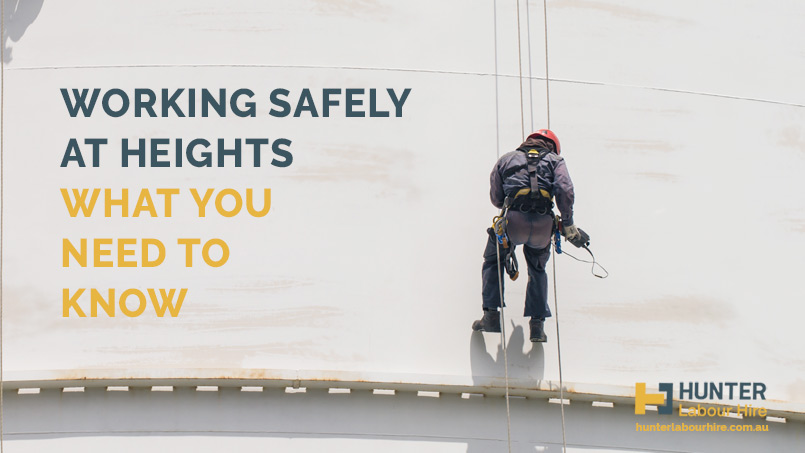
30 Jan Working Safely at Heights – What You Need to Know
Importance of Working Safely At Heights
On most major projects in the construction industry there will come a stage where work needs to be completed whilst working at heights. This could be during the building phase, scheduled maintenance or repairs to buildings and infrastructure. Working at heights brings with it additional challenges and restrictions for completing the task at hand in a safe and effective manner. As well as ensuring each worker completing the work at heights is qualified and safe to do so, it is essential to make sure other employees and the public are also not in danger. Last week we discussed how to work safely in confined spaces and so this week we’ll look at working safely at heights and outline what you need to know!

Working At Heights Definition
Working at heights means working in any place where a fall to the ground could result in a personal injury if precautions are not in place. It does not include slips and trips or falling down fixed stairs. Working at heights does not just mean working near the edge of a tall building. It includes the following:
- Working on roofs
- Working on elevated structures or platforms
- Working over tanks, pits or water
- Working on cliffs or step ground
- Working on top of vehicles, trains or mobile plants
Correct Safety Measures for Working At Heights
The most common injuries and damage caused from working at heights results from factors than can be reduced by following the correct safety measures and minimizing exposure to areas where a fall can take place. Examples of these factors include:
- Poor edge protection
- Work areas without barriers in place or covers
- Unguarded openings.
- Not using suitable fall arrest/restraint.
Working At Heights Training
Any worker required to complete work from a height must have completed the appropriate working at heights training, RIIWHS204D. This working at heights training is split in to two parts, a theory and a practical part.

Working Safely At Heights Theory components will cover:
- Legislated Requirements for Working At Heights
- Legal Guidelines for Mandatory Personal Protection Equipment Use
- OH&S Regulations
- Australian, New Zealand And European OH&S Standards
- How to Analyse and Identify Risks and Hazards
- Correct Use of Harnesses
- Correct Use of Fall Arrest Equipment
- Evaluation and Record Maintenance
- Familiarisation and Use of Safety Apparatus
- Understanding and Performing Harness Use Correctly
- Appropriately Using Ladders and Other Fall Prevention Equipment
- Familiarisation and Use of a Gotcha Rescue Bag
- Care, Maintenance and Storage of Safety Equipment
SWMS & Working At Heights
When you are working from heights you must follow a job specific SWMS (Safe Work Method Statement) and ensure everyone involved in the work has read, understood and signed off on the SWMS. There must be an exclusion zone both above and below the area the work will be carried out.
Ticketed Working At Heights Labourers Available Now
If you require working at heights ticketed labourers on your job or any other specialised ticketed labourer please call our office on 02 8985 2019 or contact us online to speak to one of our consultants about how we can assist you on site.




No Comments